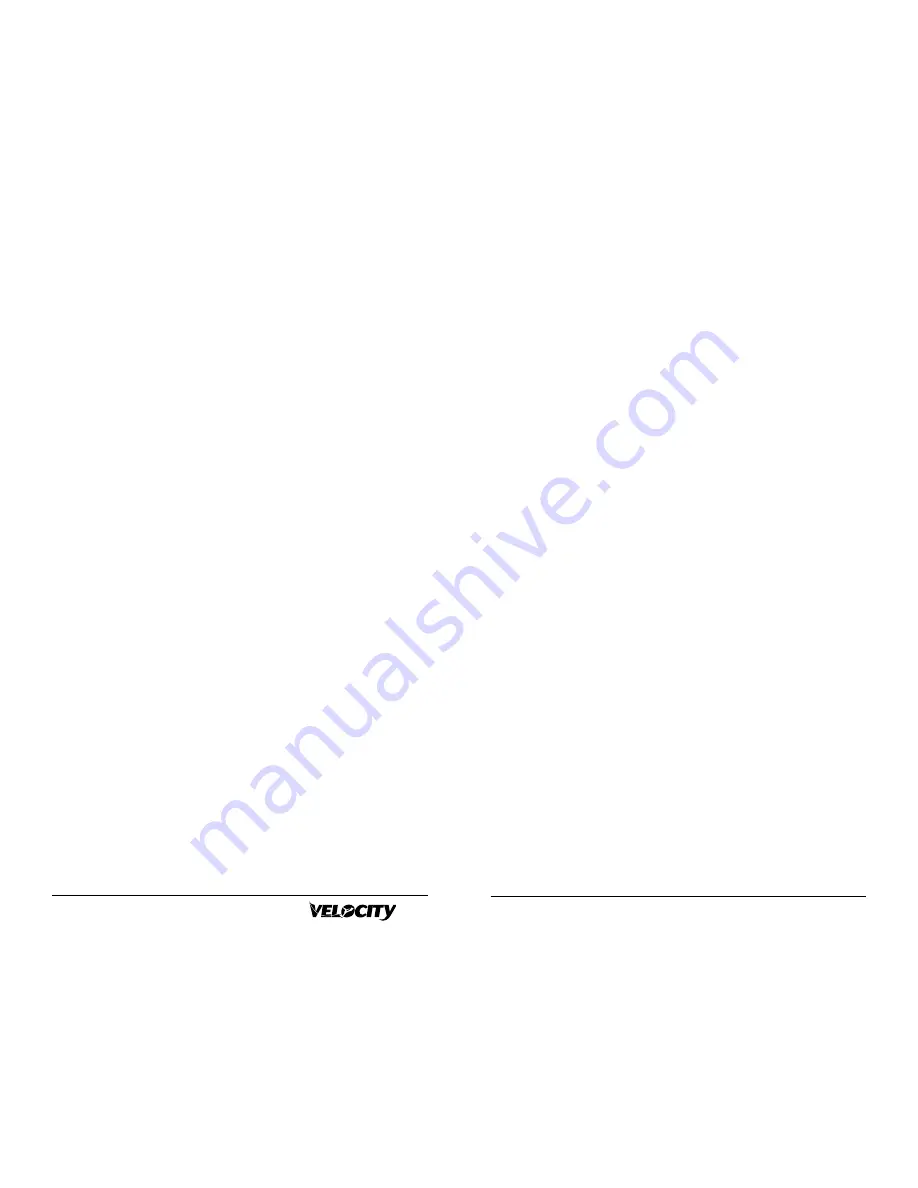
25
O
WNER
’
S
F
LIGHT
M
ANUAL
24
XL
Pilot Experience Requirements
Pilot Checkout
There is no such thing as a minimum number of total hours a
pilot should have to be qualified for checkout solo in a new air-
craft.The best pilot qualification is variety. He should be current in
more than one type of airplane.The Velocity is not difficult to fly,
but it is DIFFERENT: like a Yankee is different from a Cessna, or a
Cub is different from a Cherokee. A pilot who is used to the dif-
ferences between a Cessna and a Cub is ready to adapt to the dif-
ferences in a Velocity.The Velocity has entirely conventional flying
qualities. However, its responsiveness is quicker and its landing
speed is faster than most light training aircraft. It should not be
considered as a training airplane to develop basic flight proficien-
cy.The Velocity ranks with the best tricycle-geared types for
ground stability and has none of the ground-looping tendencies of
the taildraggers.
The requirement for a variety of experience applies to check-
out in any type of new aircraft, not only to Velocity. Velocity has
never experienced a problem in checking out a new Velocity pilot.
We always follow the criteria listed here for initial pilot checkout
and strongly recommend that you do:
1. Checkout should not be done in gusty winds, particularly
crosswind conditions.
2. Use runway at least 3500 ft. long for initial checkouts.The
beginning Velocity pilot often finds himself fast on approach and
the airplane is so clean that it is easy to use up a lot of runway in
the flare.
3. Give the potential pilot a copilot ride or two.This gives him a
first-hand look at the aircraft’s performance envelope and general
flying qualities.Trim the airplane up and let him “fly” it from the
right seat by leaning back and forth.This will give him an apprecia-
tion of the airplaneís sensitivity. Show him the use of the trim sys-
tems (pitch and roll). Let him get used to the pitch and roll feel.
Do not transition him to the left seat unless he flies the aircraft
smoothly and confidently from the right seat. Do not have him fly
solo on his first flights until he has the hang of it.
5. Weight and balance must be in the first flight box.
6. Briefing must emphasize that the aircraft should never be
rotated past the angle that places the canard on the horizon for
takeoff or landing.
7. Pilot being checked out must have a minimum of 10 hours
each in at least two type aircraft in the last 4 months (5 in the last
30 days) and feel competent and comfortable in them during mar-
ginal conditions, such as crosswind landings near demonstrated
limits, etc.
Initially some of the pilots checked out by Velocity tended to
do the following on their first takeoff: immediately after liftoff,
they would level off or descend, then re-establish a normal climb.
We have found that this is caused by the unusual visual cue pro-
vided by the canard wing. Even though the climb angle is similar to
other light planes, the canard wing gives the pilot the impression
that he has over-rotated. Since we found this was the cause, we
have told pilots the following and have found that the pitch “bob-
ble” no longer occurs: rotate smoothly to liftoff at 75 knots. If
you think you have over-rotated, do not overreact; do not shove
the stick forward. Hold the liftoff attitude and the airplane will
accelerate to 85 knots for climb.
Occasionally, a new Velocity pilot will tend to make a “full stall”
landing or flare too high.Tell him that if he has made the approach
at the correct speed and pulls power to idle before the flare, he
should not spend a lot of time in the flare. Make a complete flare,
then fly the airplane down onto the runway with finesse. Once
the main wheels make contact, continue to fly the canard and
lower the nose when speed allows.
Summary of Contents for XL RG
Page 1: ......














































